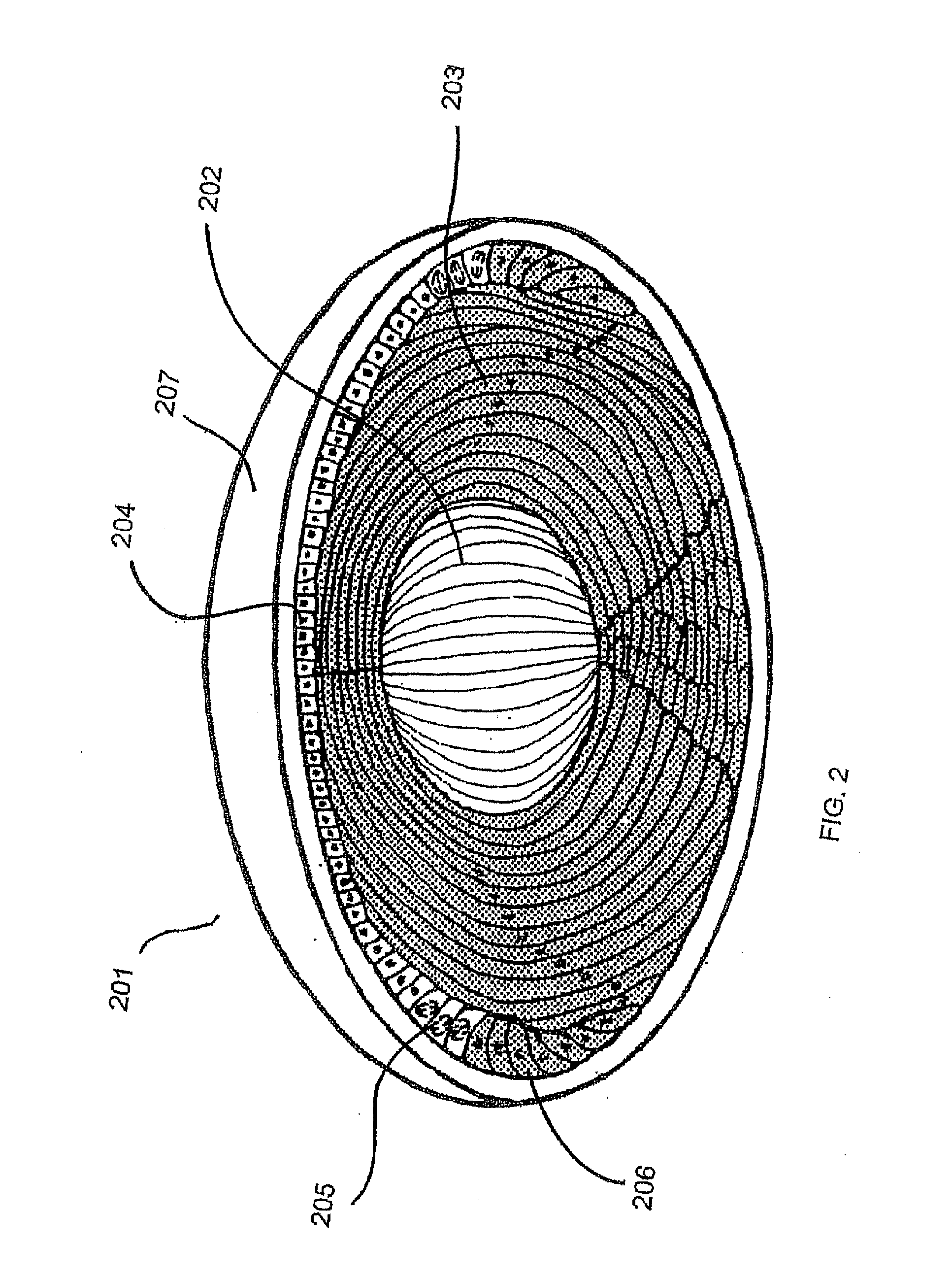Processes and apparatus for preventing, delaying or ameliorating one or more symptoms of presbyopia
a technology of presbyopia and process, applied in the field of presbyopia prevention, delaying or ameliorating presbyopia, can solve the problems of continuous decrease of accommodation, at least partially lost ability to focus on near objects, and reduced flexibility of crystalline lenses, so as to promote fiber cell differentiation, prevent, delay or ameliorate presbyopia
- Summary
- Abstract
- Description
- Claims
- Application Information
AI Technical Summary
Benefits of technology
Problems solved by technology
Method used
Image
Examples
example 1
[0146]This example shows that a mechanical or surgical approach can be used to promote formation of sutures in the crystalline lens. The production of suture patterns with three or more suture branches by geometric definition will result in the structural modifications along fiber length necessary to enable accommodation. The test subjects for this example are sets of guinea pigs at different ages (one-month-old, one-year-old). A 000 gauge insect needle is inserted just behind the corneal-scleral junction in one or both eyes of each guinea pig in the test group. The needle is advanced into the vitreal chamber at defined symmetrical locations around the circumference of the eye by advancing a needle through the corneal-scleral junction. The needle is advanced and the corneal-scleral junction is perforated in a manner like a trabeculotomy. This mechanical disruption of the environment of both the vitreal and aqueous chambers causes a change in the distribution of growth factors and pr...
example 2
[0151]In this example, the procedures used in Example 1 are repeated in different sets of animals (for example, mice or non-human primates).
example 3
[0152]In this example, sets of guinea pigs of different ages (1 month and 1 year old) are selected, and their eyes are maximally dilated. A biomarker is then topically administered to the eyes of the subjects. This biomarker specifically targets mitotically active cells. A laser application will be administered to the germinative and / or the pregerminative zones of the crystalline lens of the eyes. A specific number (20% and 40%) of mitotically active cells are ablated using an appropriate energy level, wavelength, pulse width and pulse duration. After ablation the lenses are analyzed by electron microscopy for structural changes and physical measurements of dimension and weight. Lens structure and function are analyzed at 1 month, three months, and 12 months post-surgery. The equatorial size and thickness of the crystalline lens are measured.
PUM
 Login to View More
Login to View More Abstract
Description
Claims
Application Information
 Login to View More
Login to View More - R&D
- Intellectual Property
- Life Sciences
- Materials
- Tech Scout
- Unparalleled Data Quality
- Higher Quality Content
- 60% Fewer Hallucinations
Browse by: Latest US Patents, China's latest patents, Technical Efficacy Thesaurus, Application Domain, Technology Topic, Popular Technical Reports.
© 2025 PatSnap. All rights reserved.Legal|Privacy policy|Modern Slavery Act Transparency Statement|Sitemap|About US| Contact US: help@patsnap.com



